
Construction is a risky business
The construction industry has a strong and feasible impact on all aspect of our lives and yet we could argue that it may not be getting the results that it expects. Each company and each construction project is different and comes with a set of challenges and opportunities. When a risk becomes a reality, it leads to delays, overrun penalties, order confusions, late payments and financial implications. This is why, managing risk in construction is imperative and is certainly possible with careful estimating, planning and project management.
Calculated risks
Although risk is generally a negatively charged term, it should not always be seen as something harmful. When the early signs of a possible issue are spotted and assessed timely, they can lead to golden opportunities i.e. getting a competitive advantage, increasing profit, improving customer satisfaction, etc. and ultimately business growth.
Glass is still half full, right?
However, in order to make the most of uncertain situations and turn them into opportunities, we need to properly understand the possible risks in construction. Generally speaking, risks can be divided in two main categories: internal and external.
Internal risks could be tackled comparatively easily and are linked to:
- Poor project management
- Compromised estimating
Blog: 5 most common mistakes when estimating in construction
- Inaccurate data and reports
- Workforce management and wellbeing
- Damaged or missing equipment
- Subcontractor and supply chain management
External risks are often out of reach or difficult to change and are associated with:
- Political and legal uncertainty/instability
- Fluctuations in material costs
- Construction site conditions
- Weather
Blog: A quick guide: Efficient construction project management in 7 easy steps

Be risk averse
Being prepared for the possible risks is one thing but spotting the unique issues that could cause delays to your construction projects is a whole different story. Identifying, understanding and assessing the possible risks should be done as early as possible so that your business can be prepared to either eliminate the risk, transfer it, share it, accept it or create a course of action to react effectively should the risk present itself during the project. Make sure that you rank each risk for the specific project by impact and probability. By doing this, construction business leaders can treat high probability high impact risks with bigger priority than low impact low probability ones. Risk can be acknowledged, shared, transferred, eliminated, mitigated but it should never be ignored.
Construction industry is one of the least digitised
According to McKinsey reports, large projects often take 20% longer to complete and are up to 80 percent over budget. Big numbers but you are not surprised? Yes, it does happen in business and, unfortunately, more often than we would like it to. We feel the pain of construction companies which strive to tackle uncertainties and generate profit from golden opportunities. At the same time the financial returns are tiny and often negligible at 2% margins (compared to 10-12% in other industries).
Yet again, let’s focus on the internal risks that we can manage. Common issues blamed for the notoriously low productivity and overruns by construction companies are linked to:
– Lack of visibility and coordination between the field and the office
– Insufficient Performance and project management
– Fragmented and scattered processes across the businesses
While all of the above could be improved through embracing digital technology, traditionally in construction only about 1% of revenues is allocated to technology and innovation. With the growing demand for housing and various construction works, the projects are only going to be bigger and more complicated. This on its own is calling for a shift from the traditional construction practices and increase of efficiency.
Blog: Decision making on facts
Is construction ready to embrace the risk of being more efficient?
To get out of the deadlock that the industry is in, construction companies need to shift to a more productive model of operation that will bring higher schedule reliability and reduce costs. Some of the solutions reported to improve efficiency are related to enhancing procurement and supply-chain management, improving onsite execution and coordination with the office as well as introducing technology. Owners and business directors are the real beneficiaries of these improvements, but they are also often risk-averse.
One of the main reasons for the poor efficiency in the industry is the fact that it mainly relies on paper documents to run its projects – blueprints, reports, invoices, design drawings, supply-chain orders, etc. This creates the risk of making decisions based on old and dated reports. In terms of reports, CVR, costs and profit, our research shows that a lot of the businesses are highly dependent on spreadsheets – large, complicated and time-consuming to update. Unfortunately, the biggest downside of paper- or spreadsheet-based documentation is that it turns out to be prone to mistakes and is quickly out of date.
Not only does this compromise productivity for your valued resources, but it makes data reading impossible and analytics unreliable. It creates different versions of the truth. How can directors then make business critical decisions in a time sensitive fast paced environment without having accurate information at hand?
Managing risks in construction through digital tools and process optimisation means moving towards paperless offices, live data dashboards and instant reports as well as real-time sharing of information to ensure full visibility at every stage of the project, transparency and optimal collaboration. These are key prerequisites for better time management, risk assessment and timely delivery.
With the construction sites becoming busier, mistakes are more and more common. Here’s where a lot of construction companies can feel the benefits of integrated digital solutions where systems are interlinked and they exchange information.
Recommendations:
- Think about return on investment – assess and communicate what the impact of technology implementation on the business will be
- Simplicity and intuitiveness – it has to be suitable for your staff in the back office as well as the people on site
- Change management – while introducing the latest technology is now adopted as the logical way forward, some of your people may still feel undecided whether this is the right way to go. Hence, it is a good idea, once a decision has been made, to ensure that you have the tools adopted across the business.
- Review your processes and assess where you experience the biggest inefficiencies
- Do your homework and look not only for best of breed solutions but also for integrated systems. Integrated all-in-one solutions tailored for the industry are the ones that grow with your business and deliver for your strategic goals in the long run.
-
Share:
